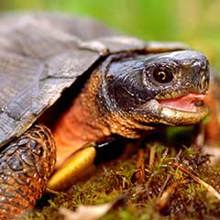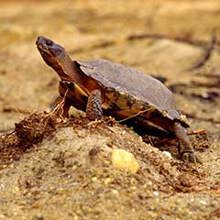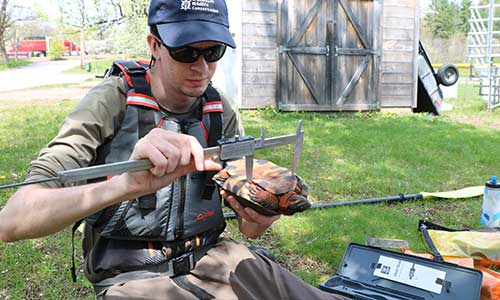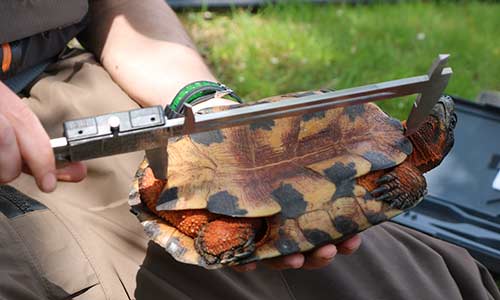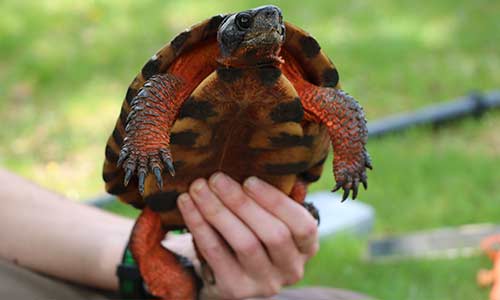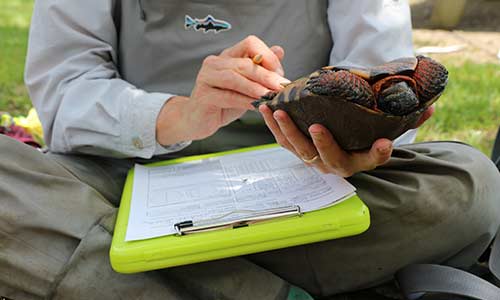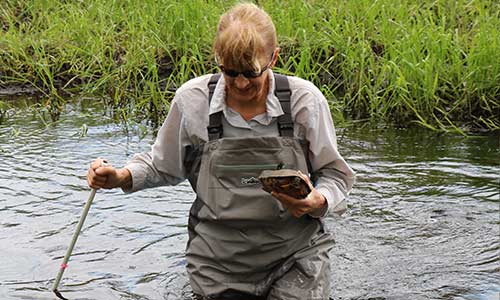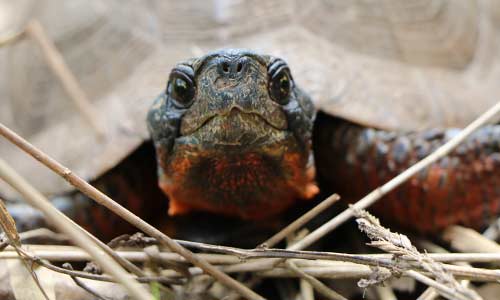Zoo New England’s Field Conservation Department has been monitoring wood turtles (Glyptemys insculpta) since 2012 at a wetland just east of Hanscom Airfield, in Concord, MA. To our knowledge, this is the last remaining wood turtle population in Concord, a town where this species was known to be relatively common in the past. In fact, the wood turtle was once the most common freshwater turtle in eastern Massachusetts. Now wood turtles are listed as a species of Special Concern in Massachusetts and listed as endangered on the IUCN redlist.
We’ve partnered with Massachusetts Division of Fisheries and Wildlife (MassWildlife) to conserve wood turtle populations in eastern Massachusetts. We are currently tracking wood turtles at five stream sites to better understand their movement patterns, habitat use, and survival rates. We are also protecting their nests from predators, and, where appropriate, headstarting hatchlings (raising juvenile hatchlings to a size where they are less vulnerable to predators).
About the Wood Turtle
The wood turtle is so-named because its carapace, or top shell, looks like carved wood. These medium-sized turtles grow to about 6–8 inches in length and are found in small populations throughout stream habitats in Massachusetts. Though few hatchlings survive to adulthood, once wood turtles reach maturity they can live to more than 70 years. As adults, wood turtles have few predators but are vulnerable to road casualties, forestry and agricultural activities, streambank development, and pesticide and heavy metal pollution in waterways.
Wood Turtle Fact Sheet

